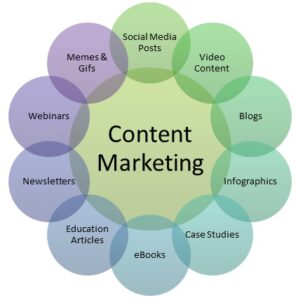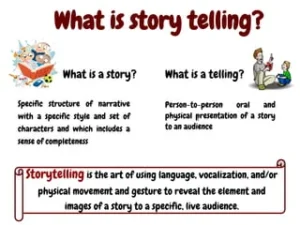Content marketing

Content marketing is a strategic marketing approach focused on
creating and distributing valuable, relevant, and consistent content to
attract and retain a clearly defined audience — and, ultimately, to
drive profitable customer action.
Instead of pitching products or services, a strategic content-driven
approach provides relevant and useful content to your prospects and
customers to help them solve issues in their work (B2B content) or
personal lives (B2C content).
Why use content marketing?
For one thing, marketing today is impossible without great content.
Content should be integrated into your marketing process, not treated
as something separate. Quality content is part of all forms of
marketing, including:
Email marketing: Consistently great content trains your audience to
anticipate, open and read emails from your brand.
Social media marketing: Content strategy comes before your social
media strategy.
SEO: Search engines reward businesses that publish quality,
consistent content.
PR: Successful PR strategies should address issues readers care
about, not their business.
PPC: For PPC to work, you need great content behind it.
Inbound marketing: Content is critical to driving inbound traffic
and leads.
Digital marketing: Content forms the foundation for an improved or
rebooted integrated digital marketing strategy.
Content strategy: Content strategy (which determines how content
is created and managed throughout an organization) must be
considered.
▪ Creating Engaging Content

1.0 Types of Content
Blogs: Written articles that provide valuable information, insights,
or entertainment. They can improve SEO, establish authority, and
engage readers.
Videos: Visual content that can explain concepts, showcase
products, or entertain. Videos are highly engaging and can boost user
interaction.
Infographics: Visual representations of data or information. They
simplify complex topics and are easily shareable on social media.
Others: Includes eBooks, whitepapers, podcasts, and webinars, each
serving specific purposes and audiences.
1.1 Storytelling Techniques for Travel and Hospitality

Authenticity: Share real stories and experiences to build trust and
relatability. Use genuine customer testimonials and case studies.
Emotion: Evoke emotions by highlighting personal experiences,
unique destinations, or memorable moments. This creates a deeper
connection with the audience.
Visuals: Use compelling images and videos to illustrate stories.
High-quality visuals can capture the essence of travel experiences
and destinations.
Narrative: Craft a cohesive narrative that guides the audience
through a journey. Structure stories with a clear beginning, middle,
and end to keep readers engaged.
▪ Content Distribution

2.0 Strategies for Content Promotion
SEO: Optimize content for search engines to increase visibility. Use
relevant keywords, meta descriptions, and quality backlinks.
Paid Advertising: Utilize pay-per-click (PPC) campaigns and
social media ads to boost content reach and drive traffic.
Influencer Partnerships: Collaborate with influencers to expand
content reach and tap into their audience.
Content Syndication: Distribute content across various platforms
and websites to reach a broader audience.
2.1 Utilizing Social Media and Email Marketing
Social Media: Share content on platforms like Facebook, Twitter,
Instagram, and LinkedIn. Use platform-specific strategies and
engage with followers through comments, messages, and posts.
Email Marketing: Send newsletters and promotional emails with
personalized content. Segment email lists to target specific audiences
and track engagement metrics.
